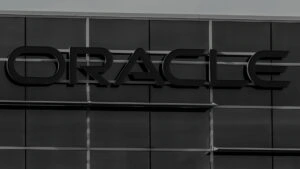The financial organization of a company can be compared to a half-timbered house. The quality of the individual elements is extremely important.
However, the load-bearing structure is only stable if the beams, frames, supports and connections are reliably connected to each other and the statics are balanced on the foundations.
Like a building, modern finance & accounting (F&A) is based on the following pillars: invoice-to-cash, procure-to-pay, financial closing, intercompany movements and consolidation & financial analytics. All of these areas are supported by ERP or special Finance & Accounting IT solutions and should be closely interlinked with as many automated processes as possible in order to form the basis for efficient and economical management of the company.
However, the Consolidation & Financial Analytics department plays a special role in the finance organization and in controlling. This is because this is where financial data is primarily prepared for external communication. This is why these figures and analyses must be available accurately, quickly and up to date.
Tradition must give way to modernity
However, the key function of Consolidation & Financial Analytics poses a challenge for some companies. This is because the consolidation of individual financial statements takes place under great time pressure. To make matters worse, fast-moving markets are increasingly forcing companies to act with agility – which includes rapid or even continuous communication and reporting, for example to banks, investors or shareholders.
In order to implement Consolidation & Financial Analytics, a large number of documents, reports and tables from different sources have to be brought together. These processes are often still manual, time-consuming and risky. And yet, once the individual pieces of information have been compiled, the financial experts need to be able to draw meaningful analyses from the data so that management and stakeholders can make the right decisions for the benefit of the company. It’s like building a house out of partly untested building materials and hoping that it will withstand the next gust of wind.
This state of affairs was confirmed by data from recent market research: in a survey of 1,339 C-level and finance professionals worldwide conducted by Censuswide on behalf of BlackLine, 55 percent say they are not entirely confident in their ability to recognize financial errors before reporting results.
When asked why they don’t fully trust their company’s data, almost a third globally (26 percent of German respondents) said that data comes from too many different sources, so they can’t be sure that all data is accounted for. Other reasons include a reliance on cumbersome spreadsheets that leave F&A teams in the dark until the end of the month (27 percent overall / 22 percent in Germany) and outdated processes – including manual data entry, which is prone to human error (25 percent overall / 22 percent in Germany).

So what does the landlord need if he needs quick results and wants to be sure that the result meets the highest standards? He needs standards, speed and risk reduction. And he achieves these goals with IT-supported financial processes that are automated to a high degree. This applies to all areas of the financial organization, because only when the individual upstream processes, speed and quality from the basic structure to the top floor are executed at the highest level can the gable be set, which figuratively equates to Consolidation & Financial Analytics.
Financial automation is a must
In the aforementioned study and when asked what would help companies to remain agile in disruptive situations, for example, over 20 percent of the finance professionals surveyed cite the ability to communicate complex financial information to various interest groups and stakeholders. Just as many cite the ability to understand and analyze financial data. In this context, it is hardly surprising that over 20 percent of respondents believe that there are not enough automated controls and checks in place for the volume of data.
A solution to these problems is not only in sight, it exists. The problem of source diversity, the potential incompleteness of information and the risk of errors when consolidating financial data can be counteracted with targeted automation. This is of crucial importance for Consolidation & Financial Analytics, because if the highest level of automation is used at the basis of the financial organization, valid data is available to Consolidation & Financial Analytics at all times.
What’s more, if the automation processes also run continuously instead of at the end of the month or quarter after the individual financial statements are transmitted to the consolidation system, real-time data is available for Consolidation & Financial Analytics at any time during the period. And this is precisely what enables a company and its stakeholders to manage the company in an agile, targeted and secure manner.
The problem of the diversity of sources and the potential incompleteness of the information can be counteracted with targeted automation.
Ralph Weiss, BlackLine
But not all automation is the same. In the past, many companies have relied on robotics or automation – even using artificial intelligence. This approach is generally to be welcomed, but there is an inherent flaw in the system if automation is not applied across the board, but only at individual points. Incomplete automation with isolated solutions means that companies have to contend with an increasingly heterogeneous range of solutions. Such a patchwork of individual automation solutions may achieve improvements in some areas, but the benefits of a holistic digitalization concept, as required for Consolidation & Financial Analytics, cannot be achieved in this way.
To ensure that the automation of all processes in Finance & Accounting does not become an unmanageable mammoth task, there are solutions for financial automation – for example from BlackLine. They work seamlessly with all classic ERP and financial solutions and standardize and automate the processes of an ecosystem to the highest degree. What’s more, special solutions such as BlackLine Financial Reporting Analytics build on the automated processes of the finance organization and enable the CFO to perform seamless on-demand analysis of line items and variances at Group level with efficient, end-to-end transparency and traceability.
This is how Finance & Accounting works today – modern, standardized and automated for maximum efficiency.







